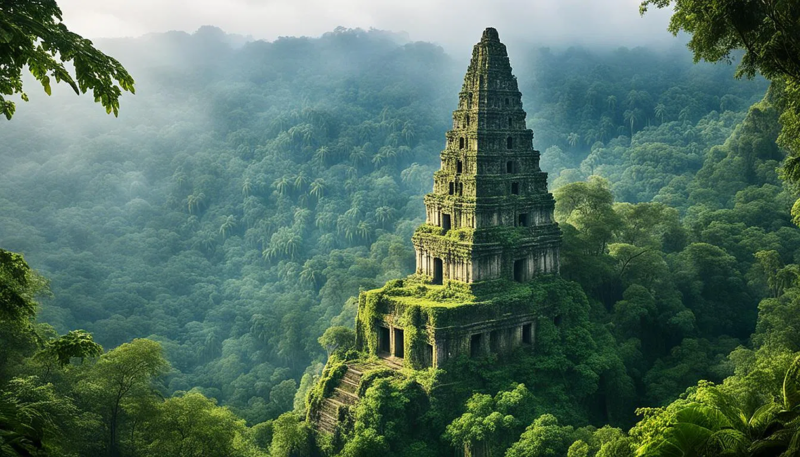
Throughout history, civilizations have risen and fallen, leaving behind echoes of their grandeur in the form of lost cities. These mysterious places, abandoned for centuries, captivate historians, archaeologists, and adventurers alike. Whether due to natural disasters, war, or shifting economies, these cities were once thriving hubs of human activity, now shrouded in mystery. In this article, we’ll explore some of the world’s most enigmatic lost cities, uncovering their fascinating histories and the secrets they still hold.
1. Machu Picchu (Peru)
Nestled high in the Andes Mountains of Peru, Machu Picchu is one of the most iconic lost cities in the world. Built by the Inca civilization in the 15th century, this breathtaking site was abandoned during the Spanish Conquest and remained hidden from the outside world until its rediscovery in 1911 by American explorer Hiram Bingham.
Machu Picchu’s stunning stone structures, terraces, and temples have left historians and archaeologists puzzled. Why did the Incas abandon this well-engineered city, and what was its true purpose? Was it a royal estate, a religious site, or a military stronghold? Despite years of study, much about Machu Picchu remains unknown.
2. Pompeii (Italy)
Pompeii, an ancient Roman city near modern-day Naples, Italy, was buried under volcanic ash and pumice following the catastrophic eruption of Mount Vesuvius in 79 AD. The city lay forgotten for over 1,500 years, perfectly preserved under layers of ash until its rediscovery in the 18th century.
What makes Pompeii so intriguing is the detailed snapshot it provides of everyday Roman life. Archaeologists have uncovered homes, temples, streets, and even graffiti, all frozen in time. The sudden and tragic demise of Pompeii’s inhabitants, alongside its remarkably preserved ruins, has fueled centuries of fascination.
3. Angkor (Cambodia)
Angkor was once the capital of the Khmer Empire, a vast and powerful civilization that flourished in Southeast Asia from the 9th to the 15th centuries. The most famous site within Angkor is Angkor Wat, a stunning temple complex dedicated to the Hindu god Vishnu, later repurposed for Buddhist worship.
At its height, Angkor was one of the largest cities in the world, with an advanced irrigation system and a population that may have reached one million. However, by the 15th century, the city was mysteriously abandoned. Scholars have debated the causes of Angkor’s decline, pointing to factors like climate change, warfare, and the collapse of its irrigation system.
4. Petra (Jordan)
Carved into the rose-red cliffs of southern Jordan, Petra was once a thriving trading hub of the Nabataean Kingdom. The city’s remarkable architecture, with temples and tombs hewn directly into the rock, made it an important center for commerce between the Arabian Peninsula, Egypt, and the Mediterranean.
Petra’s abandonment in the 7th century has remained a mystery for centuries. Some historians believe it was due to changes in trade routes, while others suggest a series of earthquakes led to its decline. Today, Petra is a UNESCO World Heritage Site and one of the most visited archaeological sites in the world.
5. The Lost City of Z (Amazon Rainforest)
The Lost City of Z is a fabled city rumored to exist deep within the Amazon Rainforest. British explorer Percy Fawcett was convinced that this ancient city, which he believed to be a highly advanced civilization, was hidden somewhere in the Amazon. In 1925, Fawcett set off on an expedition to find the Lost City of Z—and was never seen again.
While there is no concrete evidence that such a city exists, the legend has captured the imaginations of adventurers for decades. Some researchers speculate that the myths of Z may have been inspired by ancient settlements in the Amazon, which were once more populated than previously thought.
6. Atlantis (Legendary)
Perhaps the most famous of all lost cities, Atlantis is a legendary island mentioned by the ancient Greek philosopher Plato. According to his writings, Atlantis was a powerful and advanced civilization that existed thousands of years before his time. However, the island sank into the ocean after a catastrophic event, becoming one of history’s most enduring mysteries.
Many have speculated about the possible location of Atlantis, from the Mediterranean to the Caribbean. While no archaeological evidence has been found, the story of Atlantis continues to inspire exploration and intrigue. Some believe it may have been a metaphor for the fall of civilizations, while others think it could be based on a real, lost city.
7. Teotihuacan (Mexico)
Teotihuacan, located near modern-day Mexico City, was one of the largest cities in the ancient world, with an estimated population of over 100,000 at its peak. This pre-Columbian city, famous for its massive pyramids and complex urban layout, flourished between the 1st and 7th centuries AD.
The identity of Teotihuacan’s founders and the reasons for the city’s decline remain a mystery. Some theories suggest that internal conflict or environmental factors led to its abandonment, but much about this ancient metropolis is still unknown.
8. Troy (Turkey)
The city of Troy, immortalized in Homer’s epic poem “The Iliad,” was long thought to be a mythical place until its ruins were uncovered in what is now modern-day Turkey. Troy was the site of the legendary Trojan War, and its discovery in the 19th century confirmed that this ancient city had once existed.
Troy’s strategic location near the Dardanelles made it an important center for trade and warfare. The city was destroyed and rebuilt multiple times throughout history, and while much of its legendary past remains shrouded in myth, the archaeological findings continue to shed light on this fascinating city.
Conclusion
Lost cities have always fascinated humanity, offering glimpses into forgotten worlds and the mysteries of ancient civilizations. From the towering ruins of Machu Picchu to the sunken legend of Atlantis, these places remind us of the impermanence of human achievement and the enduring allure of the unknown. Whether hidden by jungle, desert, or ocean, the world’s lost cities continue to captivate and inspire our imaginations, offering endless opportunities for exploration and discovery.







